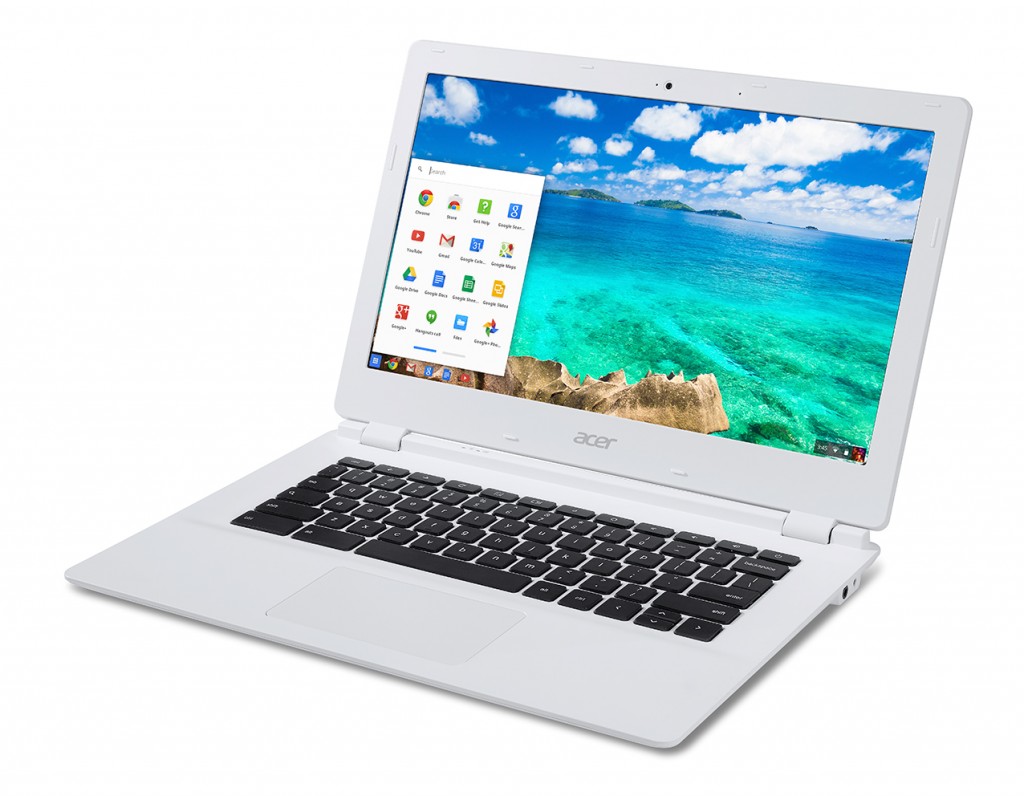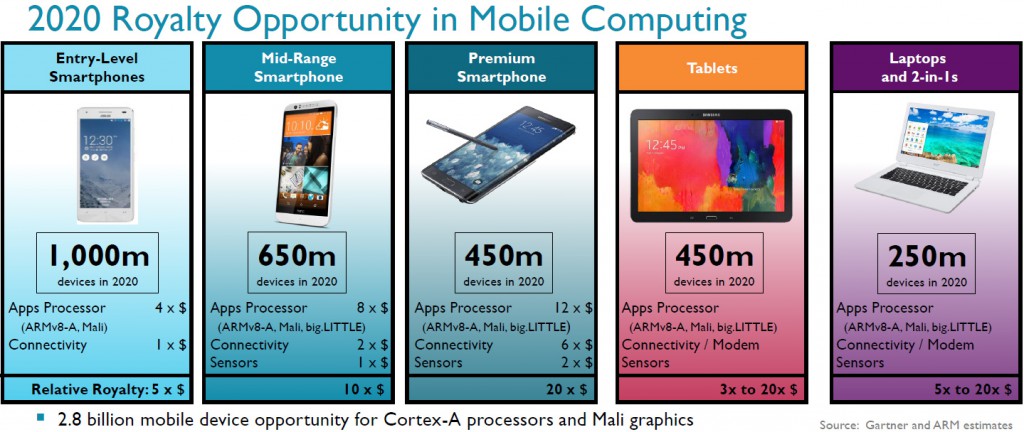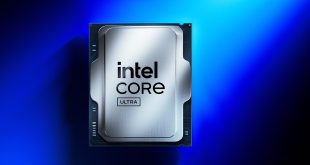Rumours about personal computers in clamshell form-factors powered by microprocessors featuring ARM architecture have been floating around for years, but only recently select Chinese companies released notebooks with Google Chrome OS that actually use ARM-based system-on-chips. According to ARM Holdings, these systems are only the beginning.
“Just recently we have seen new Chromebooks launched based on some chips from Rockchip, really optimized for low power and low costs,” said Simon Segars, chief executive officer of ARM, during the company’s quarterly conference call with investors and financial analysts. “I think some of those Chromebooks [cost] about $150. So we are helping enable very low price points there.”
ARM has been gradually improving processing performance and capabilities of its general-purpose cores for many years. The company’s Cortex-A15, A57 and A72 cores are officially positioned not only for high-performance smartphones and tablets, but also for systems in other form-factors and even servers. While ARM’s partners are free to do whatever they want with the company’s cores, ARM believes that nowadays it can address laptops in addition to traditional ultra-portable devices.
“We think about Cortex-A72 and its scalability from single core up to quad- and octa-core implementations, then I think we have a technology that can enable processors to deliver the performance and the power consumption required for a great consumer experience on a clamshell device,” said Mr. Segars.
ARM sees pretty strong opportunities for itself in the market of laptops and hybrid 2-in-1 personal computers. By 2020, the company expects 250 million of devices in clamshell/2-in-1 form-factors to use ARM technology, which is a big deal since total available market of PCs is 350 – 360 million units a year nowadays. The firm expects that notebooks will not only use its ARM Cortex general-purpose processing cores or ARM Mali graphics processing cores, but also various other building blocks for modem/connectivity solutions as well as for sensors.
Keeping in mind the fact that ARMv8-A architecture is now supported not only by Google Chrome and Google Android operating systems, but also by Microsoft Corp.’s Windows 10, ARM Holdings has a lot of chances on the market of PCs.
However, it should be noted that at present ARM’s cores can only compete against Intel Corp.’s Atom processors in terms of performance. Meanwhile, Intel’s Core M central processing units deliver desktop-class features and processing speed in 4W – 4.5W power envelope. As a result, the competition between ARM’s partners and Intel is going to be fierce in the low-end space, but not in the mainstream or high-end segments of the market.
Discuss on our Facebook page, HERE.
KitGuru Says: While system-on-chip devices powered by the company’s own cores can offer performance akin to that of Atom CPUs powered by the “Silvermont” architecture, custom ARMv8-A-compatible cores can deliver much higher processing speed. Perhaps, companies like Apple, Nvidia, Qualcomm and Samsung can develop something that is comparable to Intel’s Core M? While this is theoretically possible, the big question is whether such SoCs can win a huge chunk of the market from Intel. PC makers and end-users need a strong reason to drop x86 chips in favour of ARM chips.
 KitGuru KitGuru.net – Tech News | Hardware News | Hardware Reviews | IOS | Mobile | Gaming | Graphics Cards
KitGuru KitGuru.net – Tech News | Hardware News | Hardware Reviews | IOS | Mobile | Gaming | Graphics Cards





When GTA V will run on Max Ultra Setting on ARM Processors then PC fans will be able to move to ARM. In the meantime, you’ll have to wait for Next Nvidia ARM Chipset.
that may only be around 5 years away, the problem is that games are not compiled for arm
How many x86 processors can run GTA V at Max Ultra Settings ?.
OTOH the Tegra X1 would be able to run it at decent frames on lower settings. That could be enough for most PC users (although not for hardcore gamers), specially at the prices Tegra sells.
The main problem I see is that Valve has to port Steam to ARM, and Vulkan needs to succeed so ARM can run PC games.
There is 1 fact that people are completely unable to get in this market;
The hardware that’s in your notebook is by no means, And i mean, no means at all decided by the costumer.
It’s decided by the OEMS. They call the shots. So no matter how much you really really want an ARM in your notebook, its not up to you. Its up to the “Deals” that the OEM’s receive.
And intel completely dictates that territory.
Not sure why that is not anti-trust behaviour and abuse of cartel formation. Why the DOJ and FTC have never done anything except slap small fines on intel.
Buying off the limited distribution channels makes it impossible to compete for semi-conductor companies, even as high cost of initial and ongoing investment raises the barrier to entry.
Intel has consistently abused their market position to manipulate the market to the detriment of competition and HP, DELL and Lenovo have conspired with intel to do this so they can exact higher profits from sales. It is hardly surprising that in the past several years, sales of “ultrabooks” are being pushed, which are nothing but highly priced versions of former intel notebooks, tricked out to look like mac books (which themselves are overpriced to the max).
I don’t run GTA or any other game and I want a PC and so I want a choice. I think there should be a market for both and I hope that intel is not able to shut out ARM from the PC market with abuse of its monopoly. We KNOW they are a monopoly and we KNOW they abuse it. I just hope they aren’t successful against ARM.
Now that you mention it: Valve already ported their source engine to ARM. You can see this with Portal and Half Life 2 running on a Nvidia Shield device with Android. The question is if Valve can port the upcoming source engine 2 with low-lvl API too. Vulkan is one candidate for this.
The only thing missing are powerful GPUs inside the ARM-SoCs. Nvidia did start to engage this field with the Tegra 4 upwards. Qualcomm and Apple are running for this field too. AMD is engaging another hard-war industry. They have to prove first how far they are able to compete with the big-shots in the mobile world.
The story goes a little further than this. It is not true if you say the OEMs haven’t tried out AMD-devices. In fact the did and very often too. Most of the cases they got burned by delayed product or underdelivering hardware with lackluster support.
AMD could not deliver enough and reliable supply even if they got a design-win. In the middle of nowhere suddenly the stock ran out and no replacement delivery where in sight. This is a long-term problem which the OEM-partners of AMD face since the beginning of this century. Some of them have just enough of this guesswork and want reliability.
Another problem is the dominance of Intel, bribes or not. OEMs have trouble to find the right niche and price category for AMD hardware. They have to offer them dirt-cheap or no customer buys the products.
There are compiled games.
Lately the Unreal Engine 4, Source Engine and CryEngine 3 and some others got ported to ARM. The Android 5.0 AEP did wonders. It is just a matter of time till we see more actual games.
◔❧❧◔❧❧◔I RECEIVED FIRST DRAFT OF $13000!@ak6:
,,,
➨➨➨➨https://QuickerAdvicehina.biz/learner/kits….
If you were talking about Llano, you are indeed right, but how is it possible that on the Athlon 64 era, were AMD had the superior architecture and never had a single supply issue, they couldn’t capitalize? The subpoenas against HP and Dell says quite a lot of Intel’s anticompetitive practices and fines.
It wasn’t LIano alone! Every APU AMD ever released only got on the market with delays. Same happened with other products, even to radeons and notebooks. Another example would be Kaveri, Richland and Steamroller. The all faced massive delays and even the newest AMD Seattle ARM-based Opteron got massively delayed to 2H 2015 recently.
Every time this happends the OEMs have huge troubles. They have to fullful their contracts and fit the conditions if the product is there or not. Dell offered AMD after 2006 and integrated AMD in their INSPIRION series. They got massively burned by the returns and complains. Now you rarely see AMD in their offers. The AMD-hardware can either not find a place on the market or the customers just don’ t have high demand for them.
Delays and adoption is not the same thing, I don’t think that it has something to do with yields, but more like OEM’s not into the APU thing.
No, they are part of the whole. Computers and mobile devices are highly categorized by i.e. the TDP or the price of the hardware. AMD had troubles in the past to deliver high quanities or the same quality through a whole line.
For ARM-notebook it is especially critical. On the other hand, why would anyone buy a notebook if the same parts are in their smartphone or tablet? To pay several hundret dollars for such a notebook is not really tempting. Even if it would work, there are several different vendors to offer similar products.
To be “just enough” is not good enough anymore.